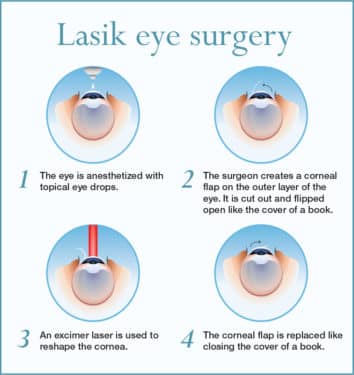An In-Depth Examination Of Modern Cataract Surgery Techniques
An In-Depth Examination Of Modern Cataract Surgery Techniques
Blog Article
Post Written By-Brask Humphrey
As you explore the advancement of sophisticated cataract surgical procedure methods, you'll witness a journey marked by resourcefulness and precision. From old methods that paved the way for modern-day developments to sophisticated technologies that are changing the area, the detailed summary of cataract surgery methods is a testament to human progression and devotion to improving client outcomes. The intricate interplay in between historic techniques and futuristic advancements creates a fascinating narrative that clarifies the advancement of among the most common surgeries worldwide.
Historical Techniques and Advancements
Check out how very early specialists changed cataract treatment by utilizing cutting-edge methods and tools. In the past, cataract surgery was a risky and excruciating treatment. Nonetheless, old Indian physicians were amongst the initial to try surgical treatments for cataracts, utilizing a technique called 'couching' where a sharp instrument was utilized to press the cataract back right into the eye. This approach, though crude by today's requirements, laid the groundwork for future advancements in cataract surgical procedure.
As time progressed, Arab medical professionals made significant payments by creating specialized needles for cataract removal. These needles were made use of to penetrate the cataract and afterwards remove it from the eye, marking a considerable renovation in medical accuracy.
Later on, in the 18th century, the French doctor Jacques Daviel spearheaded the strategy of extracapsular cataract extraction, where the entire lens was removed undamaged with a larger cut. This noted a significant advancement in cataract surgical treatment techniques, leading the way for the contemporary procedures we use today.
Modern Surgical Approaches
Early techniques in cataract surgical procedure have advanced significantly, causing the development of modern-day surgical strategies that prioritize accuracy and improved individual results. Modern cataract surgical procedure now commonly involves a procedure called phacoemulsification, where an ultrasonic tool breaks up the cataract for removal via a little incision. https://lukasnzkve.mdkblog.com/32169110/easy-and-effective-ways-to-calm-dry-eye-irritability-at-home enables quicker recovery and reduces the danger of difficulties contrasted to older methods.
In addition, making use of sophisticated intraocular lenses (IOLs) has actually transformed cataract surgery end results. These lenses can deal with not just the cataract but likewise various other refractive mistakes like astigmatism, lowering the demand for glasses post-surgery.
Surgeons today likewise have access to sophisticated imaging modern technologies that aid in exact preoperative preparation and intraoperative decision-making. Optical coherence tomography (OCT) and various other imaging techniques offer comprehensive pictures of the eye's structures, enabling a much more personalized technique to every client's surgical procedure. With these developments, modern cataract surgical treatment techniques continue to enhance, providing individuals more secure treatments and much better visual outcomes.
Emerging Technologies in Cataract Surgery
With developments in technology reinventing the field, cataract surgical procedure is witnessing the assimilation of cutting-edge methods for improved patient results. Arising technologies in cataract surgery are improving the landscape of ocular treatments. One such development is femtosecond laser modern technology, which permits specific corneal lacerations, capsulotomies, and lens fragmentation, resulting in enhanced surgical accuracy and results.
Additionally, intraoperative aberrometry is getting popularity, making it possible for real-time dimensions of refractive errors throughout surgery to enhance intraocular lens power computations and decrease postoperative refractive surprises.
Additionally, using advanced imaging modern technologies like optical coherence tomography (OCT) and intraoperative wavefront aberrometry help surgeons in specific surgical preparation and implementation. These tools give thorough anatomical information and assistance customize surgical approaches for every individual's unique eye characteristics.
Additionally, advancements in expert system are being checked out to aid in preoperative planning, intraoperative decision-making, and postoperative treatment, potentially maximizing medical outcomes and client complete satisfaction. Accepting these arising innovations in cataract surgery holds promise for additional boosting client outcomes and ensuring the continued evolution of sensory medical methods.
Final thought
As you journey via the background of cataract surgery, you witness the improvement from old practices to advanced modern technologies. Like a phoenix az rising from the ashes, cataract surgical treatment has developed into a beacon of hope and technology.
Just as a caterpillar arises from its cocoon as an attractive butterfly, cataract surgical procedure has developed into a refined art type, offering patients clearer vision and a brighter future.
The advancement continues, shining a light on countless opportunities.
